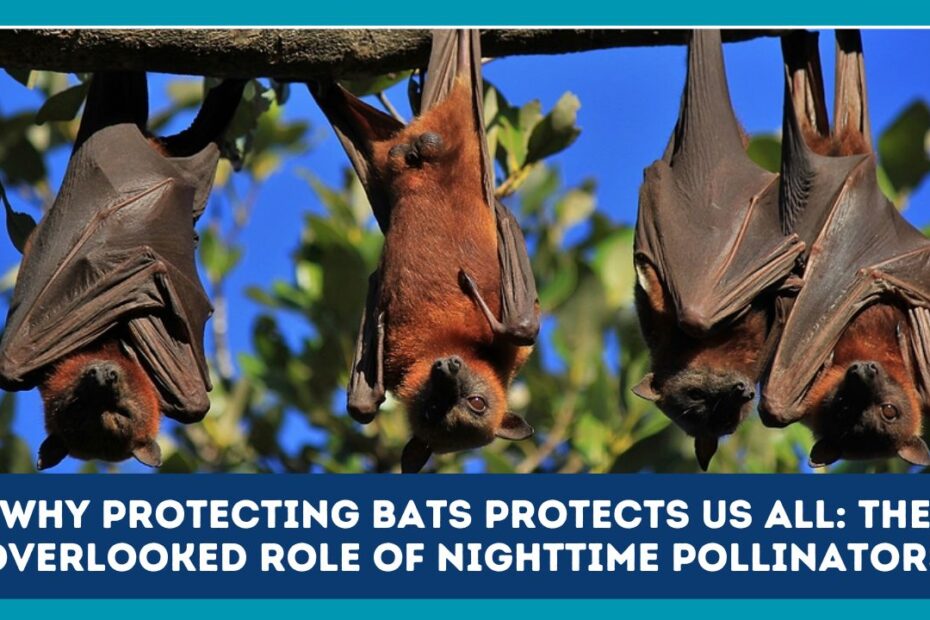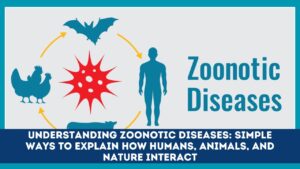Bats, often misunderstood and feared, play a critical role in maintaining healthy ecosystems and supporting human agriculture. Known primarily as nocturnal creatures, bats contribute not only to insect control but also to pollination and seed dispersal, especially for plants that bloom at night.
Despite their ecological importance, many bat species are declining due to habitat loss, diseases like white-nose syndrome, and human misconceptions. Understanding the role of bats as nighttime pollinators highlights why protecting them is essential for biodiversity, food security, and even climate stability.
The Essential Role of Bats in Ecosystems
Bats are key components of ecosystems worldwide. Their activities support plants, insects, and other wildlife, creating a delicate balance that benefits humans indirectly. The major ecological contributions of bats include:
- Pollination – Bats pollinate flowers that open at night, particularly in tropical and desert ecosystems.
- Seed Dispersal – Fruit-eating bats spread seeds across large areas, aiding forest regeneration.
- Insect Control – Insectivorous bats consume vast quantities of pests, reducing the need for chemical pesticides.
By fulfilling these roles, bats contribute to the health of agricultural systems and natural habitats, ensuring both plant diversity and food production for humans.
Bats as Nighttime Pollinators
Unlike bees and butterflies that primarily operate during daylight hours, bats pollinate at night, allowing nocturnal flowers to reproduce effectively. This nighttime pollination is crucial for several economically and ecologically important plants, including:
- Agave species – Essential for tequila production.
- Durian – A tropical fruit relied upon in Southeast Asia.
- Bananas – Many wild banana species depend on bat pollination.
- Baobab trees – Vital for local ecosystems in Africa.
How Bats Pollinate
Bats pollinate through nectar feeding. As they feed on flower nectar, pollen sticks to their fur and is transferred from one flower to another.
Some species, like the lesser long-nosed bat, specialize in pollinating agave and cacti, which bloom exclusively at night. Without bats, many nocturnal flowers would fail to reproduce, threatening both plant biodiversity and agricultural yields.
Economic Importance of Bats
The economic impact of bats is substantial, largely due to their roles in pollination and pest control. According to ecological studies, bats contribute billions of dollars annually to global agriculture by reducing crop losses and ensuring pollination.
| Contribution | Impact | Estimated Value |
|---|---|---|
| Pest control | Insects like moths, beetles, and mosquitoes | $3.7 billion annually in the U.S. |
| Pollination | Agave, durian, bananas, guava | $1.5 billion globally |
| Seed dispersal | Tropical and desert forests | Priceless ecosystem service |
By providing these services naturally, bats reduce the reliance on chemical pesticides and artificial pollination, which can be costly and environmentally harmful.
Threats to Bat Populations
Despite their importance, bats face numerous threats worldwide:
- Habitat Loss – Urbanization and deforestation reduce roosting and foraging sites.
- Disease – White-nose syndrome has killed millions of bats in North America.
- Pesticides – Chemicals used in agriculture can poison bats and reduce their food supply.
- Climate Change – Changes in temperature and precipitation patterns affect flowering times and insect availability.
- Human Persecution – Misconceptions and fear lead to bat culling and destruction of roosts.
Without urgent conservation measures, these threats could lead to the collapse of local ecosystems and reductions in crop yields dependent on bat pollination.
Species Highlight: Nighttime Pollinators
Some bat species are particularly critical as nighttime pollinators:
| Species | Region | Pollination Focus |
|---|---|---|
| Lesser long-nosed bat (Leptonycteris yerbabuenae) | Mexico, Southwestern U.S. | Agave, cacti |
| Egyptian fruit bat (Rousettus aegyptiacus) | Africa, Middle East | Figs, bananas |
| Pallas’s long-tongued bat (Glossophaga soricina) | Central and South America | Bromeliads, cacti |
| Indian flying fox (Pteropus giganteus) | South Asia | Mango, guava, durian |
These species demonstrate the global scope of bat pollination, highlighting that protecting bats is not just a local concern but a worldwide ecological priority.
How Protecting Bats Benefits Humans
Protecting bats delivers direct and indirect benefits to humanity:
- Enhanced Crop Yields – Bats pollinate plants that humans consume, improving food security.
- Reduced Pesticide Use – Fewer pests mean less chemical exposure, promoting healthier ecosystems and human health.
- Forest Regeneration – Seed dispersal by bats supports forest growth, which regulates the climate and stabilizes soils.
- Disease Control – Insectivorous bats reduce populations of disease-carrying insects like mosquitoes.
By safeguarding bat populations, we are essentially protecting our own well-being and ensuring the sustainability of natural and agricultural systems.
Bat Conservation Strategies
Effective bat conservation involves several key strategies:
- Habitat Protection – Preserving caves, forests, and other roosting sites.
- Artificial Roosts – Installing bat boxes to provide safe shelters.
- Education and Awareness – Promoting understanding of bats’ ecological role to reduce fear-based killings.
- Disease Management – Monitoring and mitigating diseases like white-nose syndrome.
- Legislation – Enforcing laws to protect endangered bat species.
Community involvement is also crucial. Individuals can support local bat conservation efforts by planting bat-friendly flora and avoiding pesticide use.
The Bigger Picture: Ecosystem Health
Bats are indicator species, meaning their health reflects the overall state of ecosystems. A decline in bat populations can signal broader environmental problems, such as:
- Decreased plant biodiversity
- Insect population surges or declines
- Reduced soil fertility and forest regeneration
Protecting bats ensures resilient ecosystems, which in turn sustain human agriculture, water cycles, and climate stability.
Bats are far more than mysterious nocturnal animals—they are critical pollinators and pest controllers whose contributions are often overlooked. By protecting bats, we protect biodiversity, support agriculture, reduce pesticide dependence, and help maintain a balanced ecosystem that benefits humans and wildlife alike.
The next time you think of bats, remember: their survival is intrinsically linked to our own well-being. Investing in bat conservation is an investment in a healthier, more sustainable planet.
FAQs
Why are bats important for pollination?
Bats pollinate flowers that bloom at night, allowing plants such as agave, durian, and bananas to reproduce. Without bats, these plants would struggle to survive.
How do bats help reduce pesticide use?
Insectivorous bats consume large numbers of pests, reducing crop damage and minimizing the need for chemical pesticides.
What are the main threats to bats?
Bats face habitat loss, diseases like white-nose syndrome, pesticide exposure, climate change, and human persecution, which threaten their populations worldwide.



